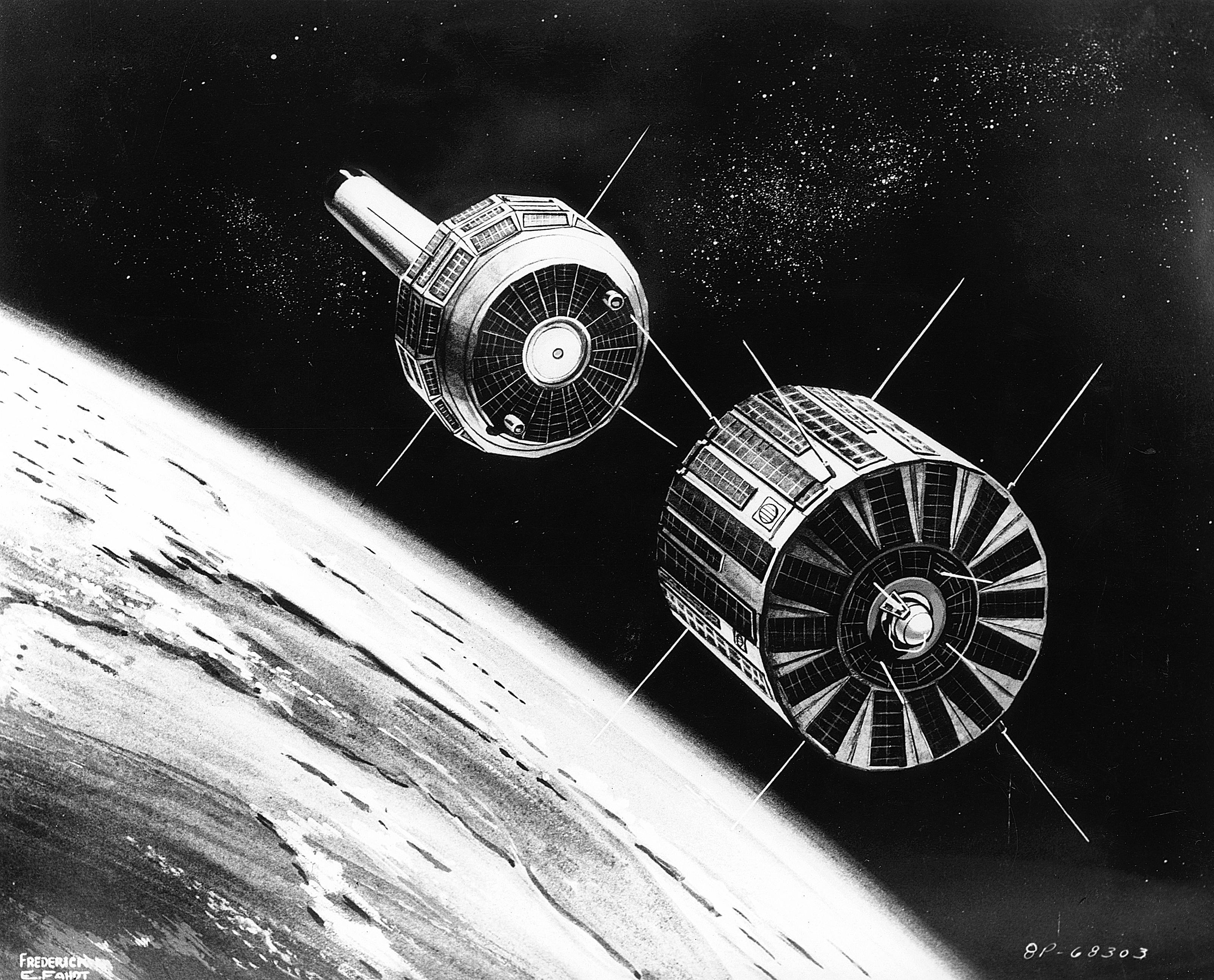Transit Research And Attitude Control on:
[Wikipedia]
[Google]
[Amazon]
The Transit Research and Attitude Control (TRAAC) 
satellite
A satellite or artificial satellite is an object intentionally placed into orbit in outer space. Except for passive satellites, most satellites have an electricity generation system for equipment on board, such as solar panels or radioisotope ...
was launched by the U. S. Navy from Cape Canaveral
, image = cape canaveral.jpg
, image_size = 300
, caption = View of Cape Canaveral from space in 1991
, map = Florida#USA
, map_width = 300
, type =Cape
, map_caption = Location in Florida
, location ...
along with Transit 4B on November 15, 1961.

Mission
The 109 kg satellite was used to test the feasibility of usinggravity-gradient stabilization
Gravity-gradient stabilization (a.k.a. "tidal stabilization") is a method of stabilizing artificial satellites or space tethers in a fixed orientation using only the orbited body's mass distribution and gravitational field. The main advantage ove ...
in Transit
Transit may refer to:
Arts and entertainment Film
* ''Transit'' (1979 film), a 1979 Israeli film
* ''Transit'' (2005 film), a film produced by MTV and Staying-Alive about four people in countries in the world
* ''Transit'' (2006 film), a 2006 ...
navigational satellites. It provided information on the effects of radiation
In physics, radiation is the emission or transmission of energy in the form of waves or particles through space or through a material medium. This includes:
* ''electromagnetic radiation'', such as radio waves, microwaves, infrared, visi ...
from nuclear explosion
A nuclear explosion is an explosion that occurs as a result of the rapid release of energy from a high-speed nuclear reaction. The driving reaction may be nuclear fission or nuclear fusion or a multi-stage cascading combination of the two, t ...
s in space, as it was one of several satellites whose detectors provided data for the Starfish Prime
Starfish Prime was a high-altitude nuclear test conducted by the United States, a joint effort of the Atomic Energy Commission (AEC) and the Defense Atomic Support Agency. It was launched from Johnston Atoll on July 9, 1962, and was the larges ...
test; ultimately its solar cells were damaged by the radiation and it ceased operation. It was among several satellites which were inadvertently damaged or destroyed by the Starfish Prime
Starfish Prime was a high-altitude nuclear test conducted by the United States, a joint effort of the Atomic Energy Commission (AEC) and the Defense Atomic Support Agency. It was launched from Johnston Atoll on July 9, 1962, and was the larges ...
high-altitude nuclear test on July 9, 1962 and subsequent radiation belt. It is expected to orbit for 800 years at an altitude of about .
Poem
The first poem to be launched into orbit about the Earth was inscribed on the instrument panel of TRAAC. Entitled ''Space Prober'' and written by Prof.Thomas G. Bergin
Thomas Goddard Bergin (November 17, 1904 – October 30, 1987) was an American scholar of Italian literature, who was "noted particularly for his research on Dante's ''Divine Comedy'' and for its translation." He was the Sterling Professo ...
of Yale University
Yale University is a private research university in New Haven, Connecticut. Established in 1701 as the Collegiate School, it is the third-oldest institution of higher education in the United States and among the most prestigious in the wo ...
, it reads in part:
:''And now 'tis man who dares assault the sky...''
:''And as we come to claim our promised place, aim only to repay the good you gave,''
:''And warm with human love the chill of space.''
References
Satellites orbiting Earth Spacecraft launched in 1961 {{US-spacecraft-stub